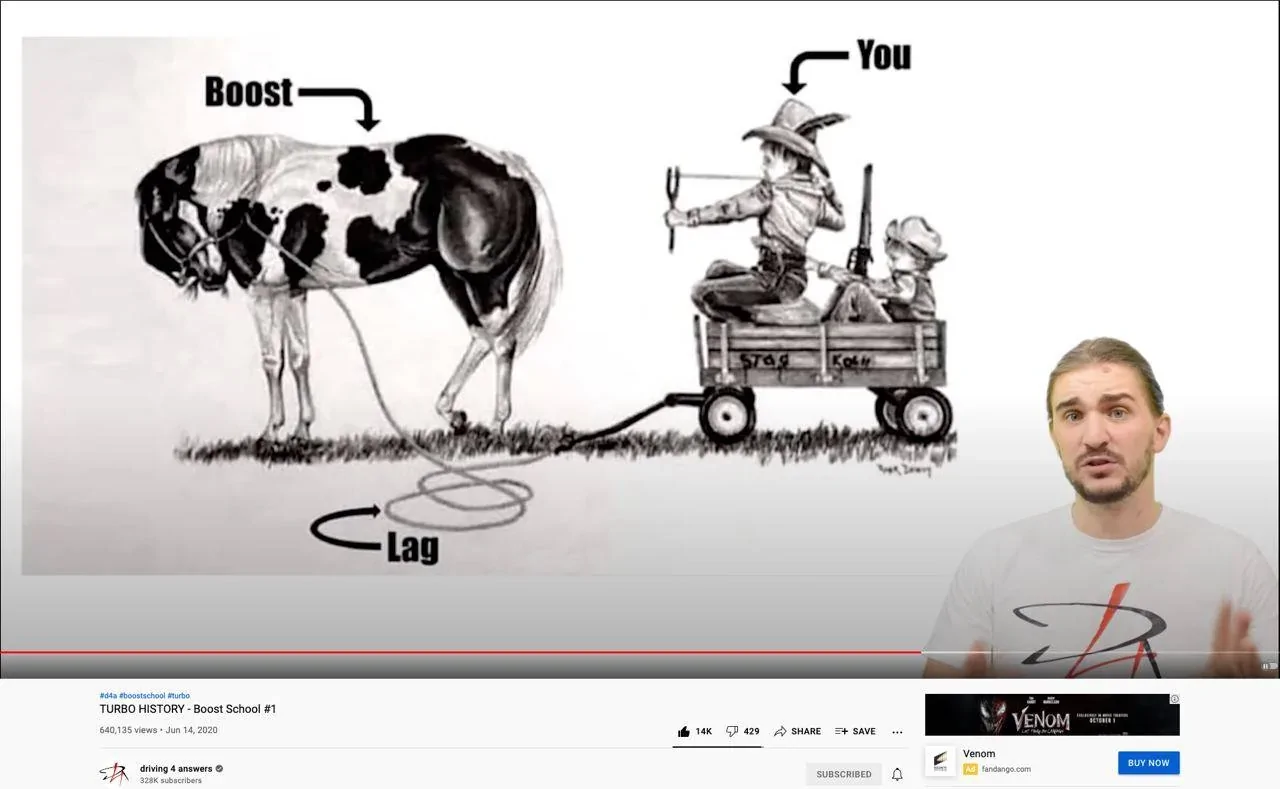Thanks for that writeup. All greek to me. I've been driving manuals all my life, now in this automatic, every time I push the gas pedal it feels sluggish/laggish. Not the instant response like in a manual. Thanks though for explaining this.TL;DR: Absent a boost-pressure gauge (or equivalent OBD-II/Ford CANbus data), or a good human ear with the windows down on a quiet road, it's seat-of-the-pants. You'll literally feel a lag between request for acceleration, and the onset of "substantial" acceleration which is •not• related to any transmission gear-downshift(s).
Turbo lag (delay between power demand and point where turbo has spooled-up from exhaust-gas pressure sufficiently to deliver an intake-air pressure boost) manifests as a seeming "sluggishness" that goes away as you lean into the throttle (i.e. press on the "gas pedal"). Larger turbos, and poorly designed throttle-plate sectors in mechanical-throttle vehicles increase the likelihood of substantial turbo lag.
Ford uses drive-by-wire for throttle control, so the "gas pedal" really has only a passing relationship to the throttle-plate angle/aperture itself, with maps (response-curves) for "gas pedal" position to throttle-plate angle changing depending on G.O.A.T. mode (among other factors).
A more aggressive response-curve in Sport mode means an "N% press" of the "gas pedal" will result in a larger throttle-plate angle/aperture than it would in Eco mode, for example. More air in -> more fuel in -> more power and exhaust gas out -> more turbo pressure "sooner".
These response-curves may (NOT A FORD ENGINEER!) also take into account rate-of-change in "gas pedal" motion in order to predict throttle demand, and transiently "spike" the throttle-plate open a bit further/faster than would occur for a slower pedal-press, resulting in reduction of human-perceived turbo-lag because the throttle-plate, engine, and turbo are actually reacting to predicted imminent demand, rather than actual measured demand. I've driven at least one vehicle from another manufacturer where this was done in order to provide non-turbo-like engine characteristics for people coming from larger displacement naturally-aspirated sport engines.
The turbo in both of the Ford Bronco Sport engines itself is likely sized appropriately for the engine, and throttle response-curves tuned to minimize turbo lag. But, in this thread's scenario, you're also talking about a 1.5 litre intercooled-single-scroll-turbo I3 on a ~3900 lb vehicle. There will still be •some• lag.
You'd notice turbo lag most in Eco mode, where the goal is best fuel economy, and not best ("crispest") throttle responsiveness.
You'd notice turbo lag least in Sport mode, where the goal is best ("crispest") throttle responsiveness and maximum output (horsepower and torque) from the engine when requested.
EDIT: One addendum, I checked with FORScan Lite, there is no turbocharger specific sampling data available, but you can look at the difference in measured absolute barometric and manifold pressures to extrapolate when the turbo is pushing air, manifold > barometric == turbo definitely making pressure.
I have less than a 1000 miles on it, mostly in Normal. Tried Sport and Eco (1 tank of gas each), I do feel the quick response in Sport and the sluggishness in Eco.
If it matters, I use 87 octane in my simple Mitsubishi Lancer manual; 88 octane in the BS.
Sponsored


